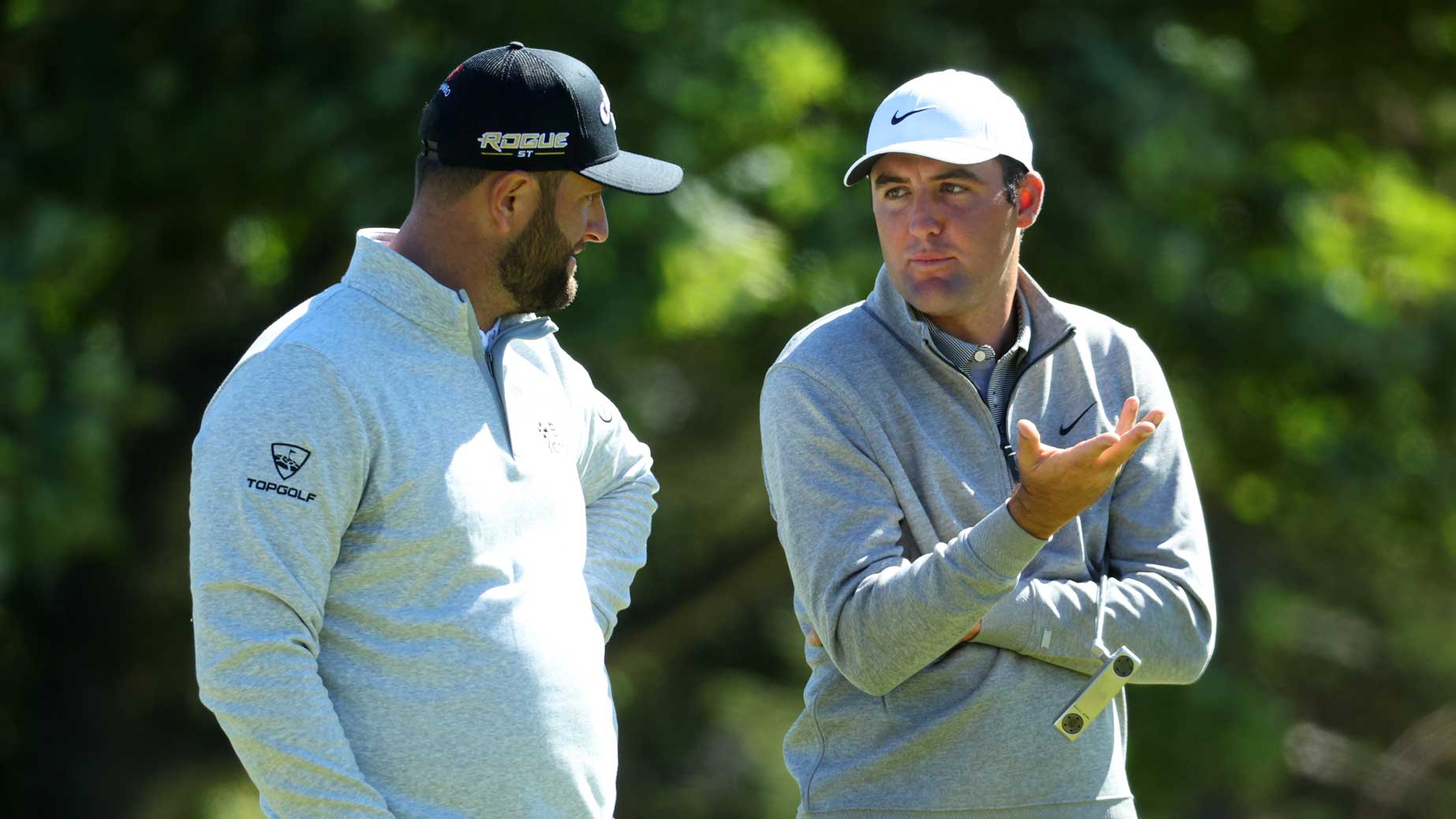While LIV Golf’s rise has raised new questions about the merits of the Official World Golf Ranking, in the background a major change has occurred. The ranking has rid itself of bias and injected new features into its algorithm to improve its accuracy and relevancy.
Confused? We understand! The OWGR was a complex system weeks ago, and it became even more difficult to explain this week as changes were introduced for the first time. But these were good tweaks, and we knew they were coming. The alterations were announced a full year ago, and just now went into effect.
For starters, the OWGR had previously benefitted players who predominantly played outside of the PGA Tour ranks due to various minimum tournament values applied to events on the DP World Tour. Simply, if you were finishing high in Europe, it was benefitting your ranking incongruously compared to the difficulty it took to finish, say, T20 in a PGA Tour event. Those facets of the old system are now gone.
In their place is a new algorithm called “Strokes Gained World Rating,” which is based entirely off players’ scores. A 72 in the U.S. Open, for example, will factor differently than a 72 in the John Deere Classic, as it should. A player’s Strokes Gained World Rating will help us identify the best tournaments, based on how many top-ranked players are in the field.
In the past, when an elite player like, say, Rory McIlroy would commit to an event, he would bring with him a certain world rating value to the tournament. The more value in a field, the better the strength of field, the more world ranking points would be available. The problem with that formula is it was based entirely on integers. The No. 1 player in the world would bring 30 world rating points. No decimals, no fractions. Just 30. There would be fewer points for the No. 2 player in the world and fewer yet for the No. 34 player.
In the new system, Nos. 5 and 6 — Scottie Scheffler and Justin Thomas — are virtually interchangeable in what they bring to a tournament. Based on the scores they’ve carded in the last two years at the events they’ve played, Scheffler and Thomas are value-adds to the tournament, and based on the new OWGR system, they are worth the equivalent of both Max Homa and Tommy Fleetwood joining the field.
A player’s Strokes Gained World Rating is used to derive a “Performance Points” value, and the entire sum of Performance Points values will define the overall strength of the field and the total points that can be “won” during its four rounds.
Here’s a more specific example of how it works:
Scottie Scheffler Performance Points: 10.28439
Sum of Max Homa and Tommy Fleetwood: 10.26341 (5.06324 + 5.20017)
Why does this matter? Well, in the former system a field’s strength was determined only by how many players in the OWGR top 200 were playing in it. When events didn’t feature many OWGR top 200 players, that’s when the tour minimums came into play, offering up a baseline level of points for the Japan Tour and a different baseline for the DP World Tour.
So if the DP World Tour hosted an event without a single top 200 player, it still gave out World Ranking points that were commensurate with the tour’s elevated status in the game. Now, events will hand out points based entirely on the recent performance of every player in the field. This includes players ranked outside the top 200, who will still have performance points, although only a fraction of, say, Scheffler’s.
Another example:
Scottie Scheffler Performance Points: 10.28439
Sum of Brian Harman, Harris English, Sahith Theegala and Kevin Kisner: 10.25994
Approximately nine players of Brandon Wu’s ability over the last two years: 10.12
The total sum of the players in the field will dictate the Field Rating and how many points are dished out. Importantly, all players who make the cut will earn ranking points, which is a departure from the past system that did not reward players for making the cut and finishing poorly on the weekend.
An example of the difference in points awarded will unfold this weekend. The FedEx St. Jude Championship gave Tony Finau 78 points last year when he won the first playoff event. This year, the winner is expected to receive 68.55296. That difference alone should show you this new OWGR means serious math! The 9.45 point differential can likely be attributed to the absence of top players in the field who jumped to LIV Golf, but this is just a best guess — your correspondent is not a computer.
In short, the new algorithms running in the background of the OWGR are better, more thorough, more inclusive and less biased against PGA Tour players. Past issues were minor, but they’ve been remedied. And perhaps most important to understanding the ranking now is the current system started this week. It will only impact events and performances moving forward.
Thankfully, the OWGR itself has been fully transparent about its changes, even making an easy-to-follow video that explains them all (see below).
Next up for the OWGR? Another weighty matter: How to deal with LIV Golf…
